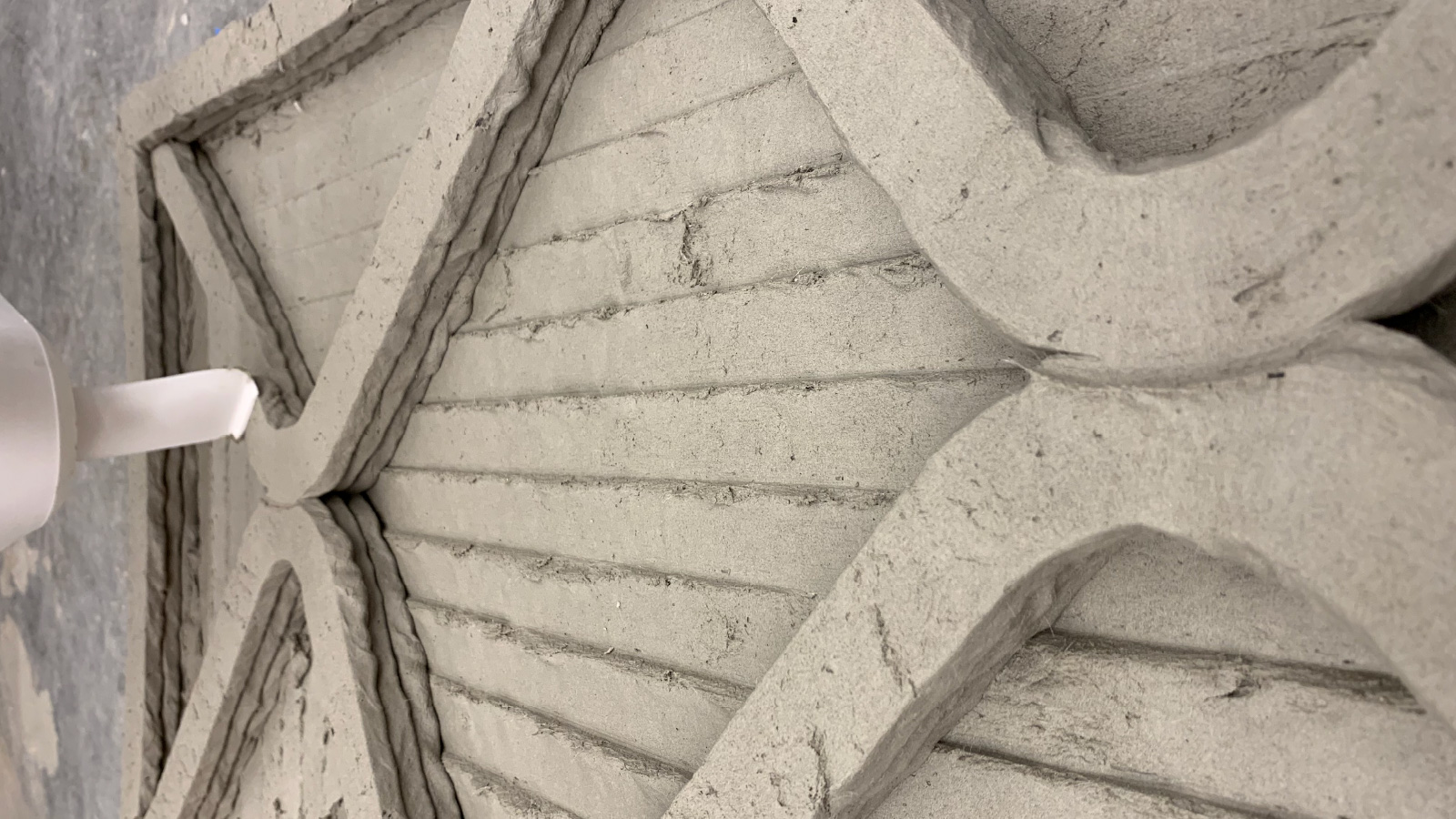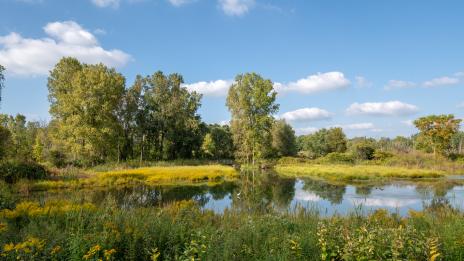By Eric Gallippo | Photos by Tsz Yan Ng
Today’s built environment is a major contributor to global carbon emissions, with estimates as high as 40% when accounting for materials, construction, and operations, according to University of Michigan experts. Despite calls for more sustainable building practices and ongoing research into alternatives, the industry has been slow to change for a number of reasons, said Kathy Velikov, professor and associate dean for research and creative practice at Taubman College of Architecture and Urban Planning.
“It's a fragmented industry. It's very localized, and margins are often low,” Velikov said. “The building industry overall has been slow to adopt new technologies, creating a lot of snowballing effects. We're not advancing fast enough in terms of efficiency, cost, equity, and sustainability.”
Recently, Velikov and other leaders across disciplines at U‑M started working together on a new effort to change that. The Low Carbon Building R+D Initiative aims to tackle complex challenges related to reducing carbon emissions in the built environment and respond to climate change impacts across the industry, from materials and operations emissions to end-of-life reuse. The initiative includes faculty and researchers from Taubman, the College of Engineering, the School for Environment and Sustainability, and more, and is modeled after similar successful efforts in Europe and at Carnegie Mellon University.
Working together
Still in the early stages, the initiative evolved out of an earlier effort, the Center for Low Carbon Built Environment, which was focused on applications for new materials—specifically low-carbon, fiber-reinforced concrete developed by retired College of Engineering Professor Victor Li. Today, Velikov said, the group is working to build university collaborations around enabling living labs on campus. The core of the initiative calls for U‑M to develop the first North American comprehensive, campus-scale “living lab” program for the built environment—where transformative research and industry collaborations can be put into practice to help lead the way in changing the industry. That includes constructing full-scale demonstrations on campus and getting living labs incorporated into proposals for new construction as well as updates of existing buildings.
It is anticipated that the Low Carbon Building R+D Initiative will launch large-scale, interdisciplinary projects that can capture major external funding. For now, Tsz Yan Ng, associate professor of architecture at Taubman, said it’s helping to serve as an “umbrella” for connecting different research areas related to the built environment, from construction innovation to retrofits to circular building practices. Ng’s own work is focused on sustainable building materials and methods, especially ones that solve for labor shortages following COVID-19.
“This initiative is about bringing all of these entities together, where basic science and applied research are working together,” she said. “We have different types of material systems that researchers are working on, translating them to new building designs that can be tested and then bringing them into the market and having them deployed.”
Filtering facades
One early collaboration is already taking root between Taubman and the Matthaei Botanical Gardens and Nichols Arboretum (MBGNA), where Ng and her team started work on two donor-funded projects over the summer using 3D-printed clay and low-carbon concrete, respectively.
The first project involved building a new ceramic facade at the lower level of the Burnham House welcome building at Nichols Arboretum. Ng is interested in the potential for ceramics to slow down and even filter stormwater to aid with flooding and contamination caused by extreme weather. The research is in collaboration with Tulane University. Testing ceramic facades in both locations, Ng said, allows researchers to compare how the material holds up in two different climates: Ann Arbor’s cycle of freezing and thawing and New Orleans’ humidity and hurricane season precipitation.
Innovating information
For the second project, Ng and collaborator Wes McGee are working on planning and installing new information hubs at Nichols and Matthaei that will replace the existing wooden kiosks. Built from robotically printed concrete reinforced by internal fibers and placed in different locations around the grounds, the structures will allow for testing the materials as well as methods for building them, since they will be assembled on site from preprinted sections. Equipped with digital displays, the information hubs will also consolidate signage and offer a variety of messages for visitors—from standard maps to stormwater tours to environmental justice critiques of the arboretum itself—said MBGNA Director Tony Kolenic.
“A leading university finds opportunities like this; opportunities to unify sustainability research and creative practice in the built environment with sustainability innovation in the natural environment,” Kolenic said. “And it allows us to further our mission—to communicate more clearly around big, heady topics and to highlight the innovation and research coming out of Taubman and Engineering and other partners.”
Stewarding a sustainability ecosystem
To Kolenic, that mission extends beyond hosting 525,000 U‑M visitors annually, to ensuring that care for the natural world and biodiversity goes hand in hand with technological solutions to sustainability.
“We think about ourselves as a place-based transformational force for social and ecological resilience,” he said, “meaning that the best possible thing we can be doing is getting people to understand themselves as part of the natural world.”









